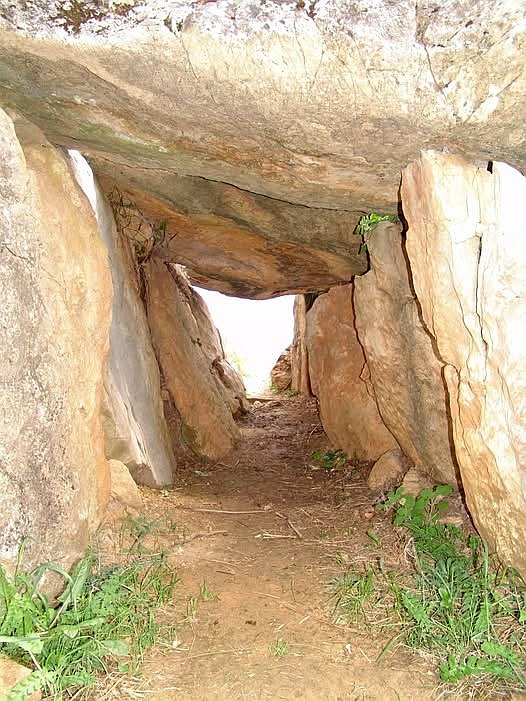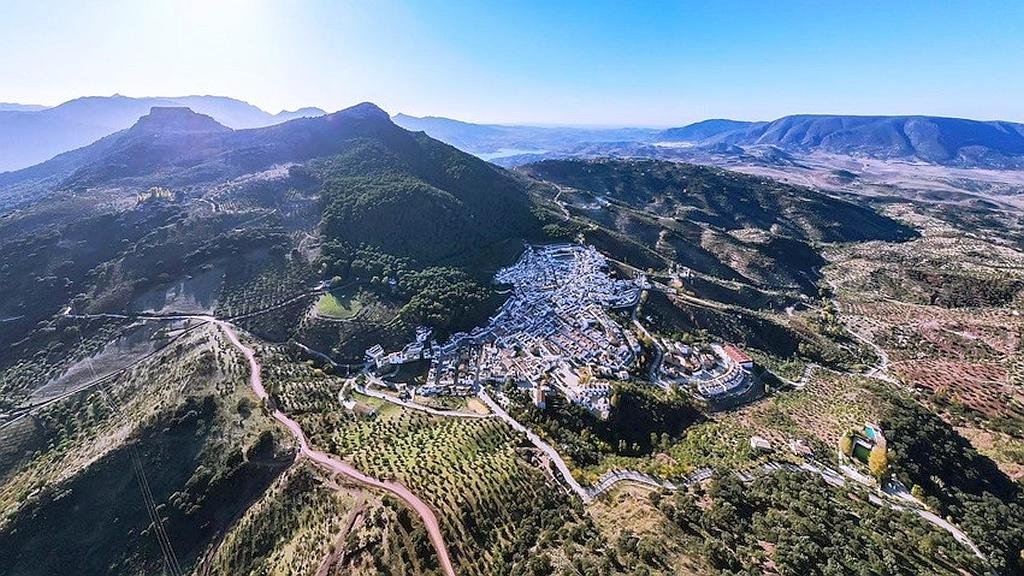Nestled in the heart of the Sierra de Cádiz, El Gastor is a picturesque village located 131 kilometres from Cádiz, the provincial capital. Known as El Balcon de los Pueblos Blancos (The Balcony of the White Villages), it offers breathtaking views from El Algarín Mountain and Las Grajas Peak, the two highest summits in its municipal area. The village combines stunning landscapes, rich history, and vibrant traditions, making it a popular place for travellers exploring the province of Cádiz and western Andalucia.
Getting to El Gastor
El Gastor is easily accessible via the A-384 road that connects Arcos de la Frontera with Villamartín and Algodonales. From there, take the A-374 and then the N-342 to reach the village. Its convenient location also makes it an ideal base for exploring Andalusia.
Where to stay in El Gastor

You can use the search box below and head over to booking.com
A Journey Through History
Prehistoric Roots
The area’s history dates back to the Bronze Age, as evidenced by the Dolmen del Gigante, a megalithic tomb constructed from massive stones over three metres tall, forming a 12-metre-long gallery. This ancient monument is one of the most significant archaeological sites in the region.

Roman and Arab Influence

The Romans established cities such as Irippo and Orchila in the area, while later settlements were influenced by Arab culture.
By the 19th century, El Gastor was part of Zahara (de la Sierra) before gaining independence in 1834. During the Peninsular War, the village served as a refuge for bandits and guerrilla fighters.
Things to See and Do
Historical and Cultural Highlights
- Explore the Village: Stroll through the village and stop for some tapas at one of the bars or restaurants.
- Parish Church of San José: Built in the 18th century, this beautiful church remains in excellent condition and is a symbol of the village’s religious heritage.
- Museum of Local Traditions and Customs: Discover the everyday life and craftsmanship of El Gastor’s past.
Natural Attractions
El Gastor’s location at the foot of Tajo Algarín cliff provides stunning views of the surrounding sierras and nearby villages. Outdoor enthusiasts will appreciate the proximity to:

- The Grazalema Natural Park: Renowned for its exceptional biodiversity and dramatic landscapes.
- Lake Zahara/ElGastor: A peaceful spot for fishing, kayaking, and picnics.
- Wildlife watching: Spot griffon vultures and Spanish ibex whilst enjoying the breathtaking scenery of the Cádiz interior. Consider taking a guided tour with a local wildlife guide.

Outdoor Activities
From hiking and cycling to rock climbing and caving, El Gastor offers a wide range of outdoor pursuits. Additional activities include horse riding, hot air ballooning, and even paragliding. During summer, visitors can also relax at the municipal pool, which has its own bar and restaurant.
Local Traditions and Crafts
The Gaita Gastoreña
El Gastor is a village that cherishes its traditions. The Gaita Gastoreña is a traditional wind instrument, or “aerophone”, crafted in a basic yet artisanal manner. It is made using a bull, cow, ram, or goat horn combined with wood from oleander, fig, or walnut trees—the latter being the preferred choice of players. The wood is hollowed out using fire and features holes for playing notes, resembling the Arabic chirimía (a type of oboe).

The craft of pleita
The craft of pleita, which involves braiding palm leaves into ropes for covering everyday items such as bottles and baskets, is another cherished tradition passed down through generations.

Gastronomy
The cuisine of El Gastor reflects the richness of its land. Locally produced olives yield exquisite olive oil, while cured meats such as chorizo, black pudding, and pork cracklings are staples. Popular dishes include:
- Guisote: A hearty stew made with bread crumbs, asparagus, and garlic.
- Puchero: A traditional chickpea stew.
- Chicken with Almonds: A local delicacy.
- Sweets: Try roscos blancos and hornazos, especially during Easter.

Festivals and Events
El Gastor’s calendar of events showcases its lively spirit and deep cultural roots. Highlights include:
- Corpus Christi (June): Declared a Festival of National Tourist Interest in Andalusia, this celebration transforms the village into a green oasis adorned with flowers, greenery, and colourful fabrics. The day features a procession and the Gaita Gastoreña contest.
- Festival Flamenco (October): A tribute to guitarist Diego de El Gastor.
- Spring Festival (March): Celebrating the arrival of spring.
- Summer Cultural Evenings (August): A series of cultural events.
El Gastor as a Base for Exploration
El Gastor’s location makes it an excellent base for exploring the region. Within a short drive, visitors can reach:
- Ronda (20 minutes): Famous for its Moorish architecture, the iconic Puente Nuevo, and Roman ruins.
- Seville, Jerez, and Cádiz (1.5 hours approx): Explore historic cities and coastal charm.
- The White Villages (Pueblos Blancos): Discover nearby gems like Arcos de la Frontera, Setenil, Grazalema, and Zahara de la Sierra.
Why Visit El Gastor?
This traditional mountain village offers a perfect blend of history, culture, and natural beauty. With its cobblestone streets, whitewashed houses, and flower-adorned balconies, El Gastor provides a quintessential Andalusian experience. Whether you’re seeking tranquillity, adventure, or cultural immersion, El Gastor promises a memorable visit.
The official tourist office website (in Spanish) for El Gastor is here: https://elgastorturismo.com/
Ronda Today
Everything you need to know before you visit Ronda “The city of dreams” in Andalucia. https://www.rondatoday.com/
Visit Cádiz
Planning on visiting Cádiz? Tourist information. Monuments. Hotels. Activities. City guides: https://visitingcadiz.com/
The Caminito del Rey
Find tickets for the Caminito del Rey: https://www.caminodelrey.es/
Wildside Holidays – Spain
Take a trip on the Wildside! Discover the wildlife and nature of Spain, its Natural and National Parks and find the top wildlife, activity and walking holiday companies.
Iberia Nature Forum
Struggling with identifying those bugs and beasties? Why not check out the Iberia nature Forum! https://iberianatureforum.com/
I’ve been living in this lovely area of Western Andalucia for the last 20 years or so and dedicate most of my time to the running of English language tourist information websites for the towns of Cádiz, Ronda, Grazalema, the famous or infamous Caminito del Rey, and also Wildside Holidays, which promotes sustainable and eco-friendly businesses running wildlife and walking holidays in Spain. My articles contain affiliate links that will help you reserve a hotel, bus, train or activity in the area. You don’t pay more, but by using them you do support this website. Thankyou!
